Zion National Park - 2008 . . .
on our
route from the Pacific Northwest
Updated: 11/30/08
Zion National Park
Our second day at Zion . . .
Leaving Zion National Park . . .
The Shuttle Buses . . .
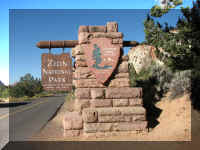 Established
in 1909 as Mukuntuweap National Monument, it became Zion National Park in
1919. Covering 229 square miles, it is Utah's oldest National Park. The
name "Zion" meaning "place of refuge" was given to the
canyon by Mormon Pioneers. Unlike some other national parks where you are at the
canyon rim looking down - in Zion, you are on the floor of the canyon looking
up.
Established
in 1909 as Mukuntuweap National Monument, it became Zion National Park in
1919. Covering 229 square miles, it is Utah's oldest National Park. The
name "Zion" meaning "place of refuge" was given to the
canyon by Mormon Pioneers. Unlike some other national parks where you are at the
canyon rim looking down - in Zion, you are on the floor of the canyon looking
up.
We arrived in early evening, so an available campsite in the South Campground
was difficult to find. Many of the campsites were too small for our HHII or large enough but occupied by a small RV. Our site received partial sun so the
solar panels could do their job.
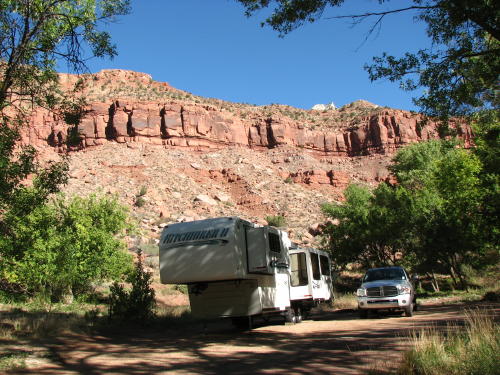
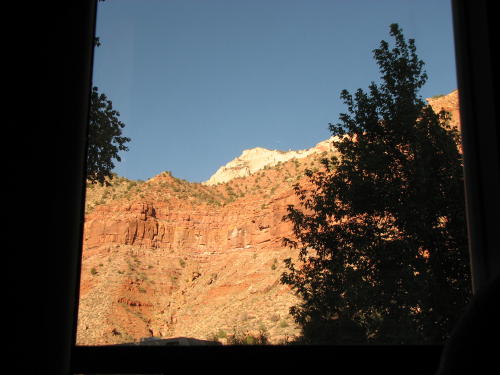
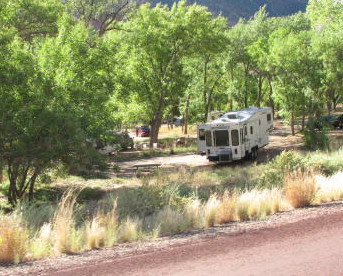
The Zion Human History Museum was also taking advantage of the power from the sun. The displays
included a relief
map of the park. A video was very informative. It was one of the shuttle stops.
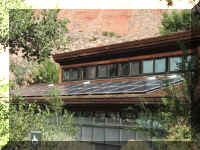
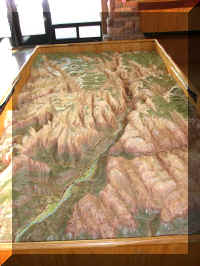
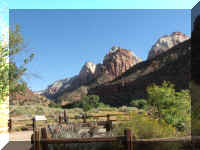
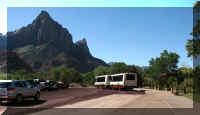
The following photographs are displayed in groups as made from the indicated shuttle
stop.

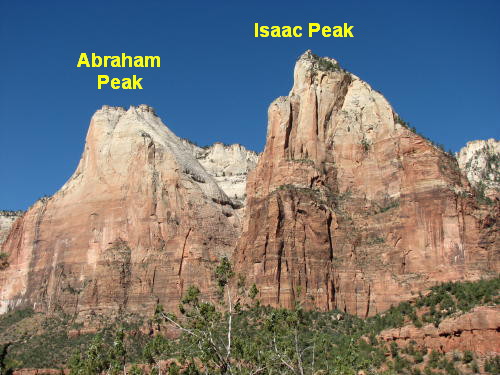
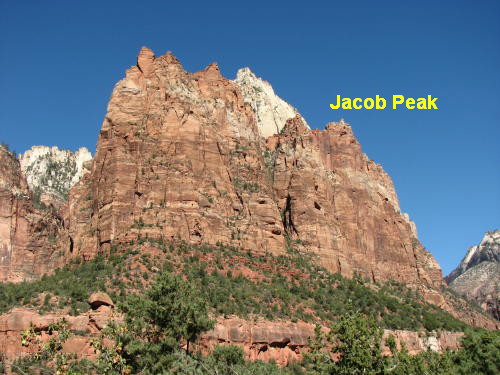


We saw several artists at work in Zion.
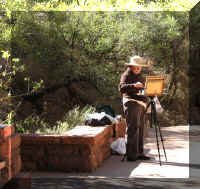

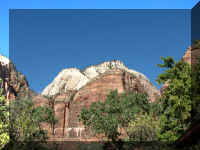
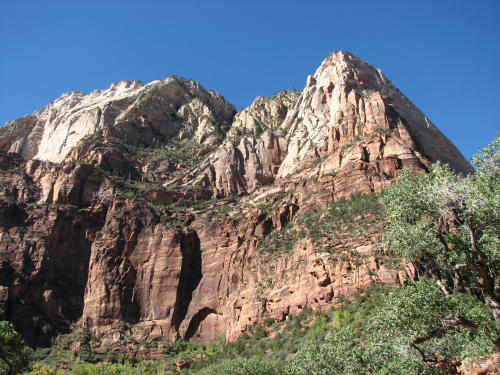
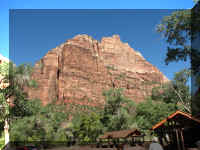
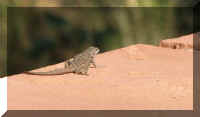
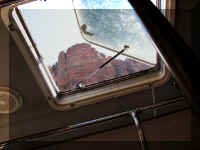 < Thru the shuttle roof vent.
< Thru the shuttle roof vent.

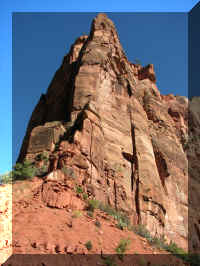
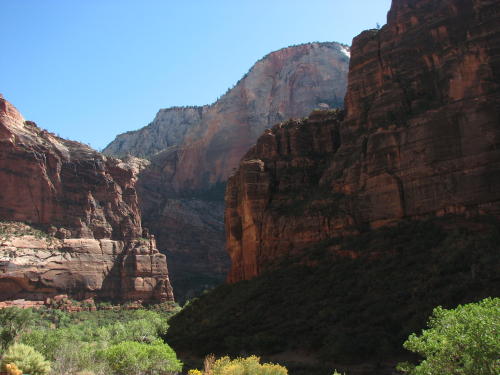
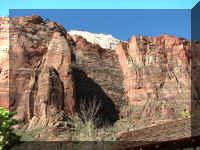
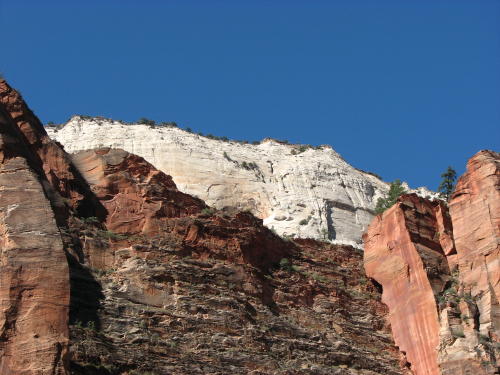
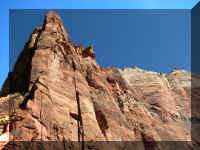
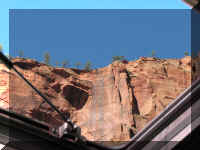
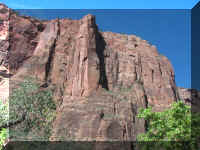
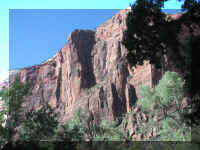
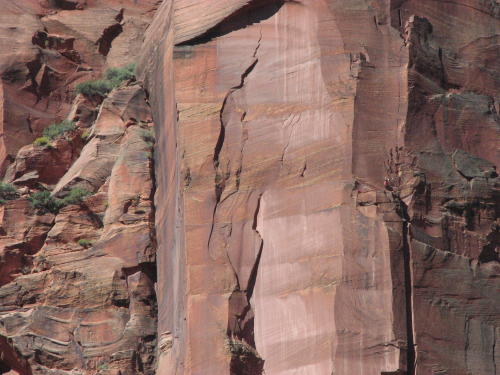
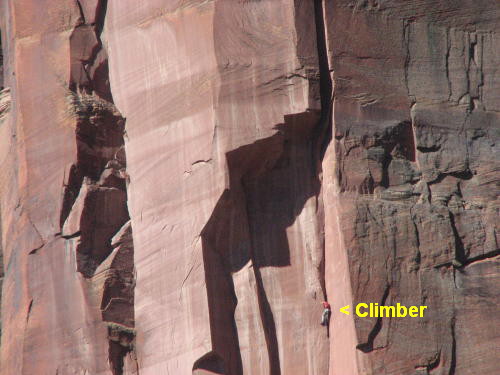

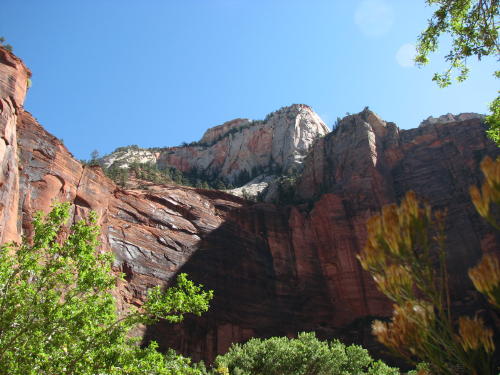
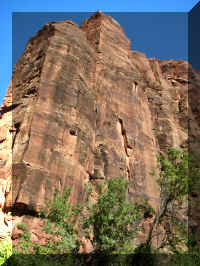
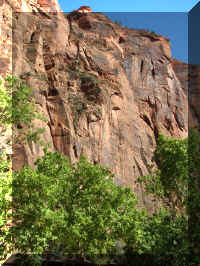
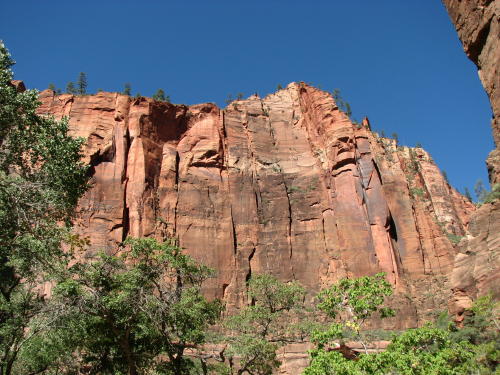
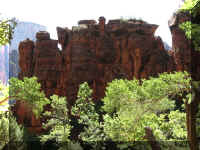
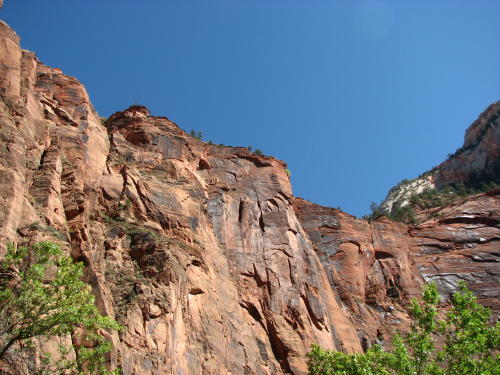
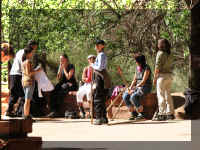 This group
had just completed a hike in the area known as The Narrows of the Canyon. They were
outfitted and trained by the Zion Adventure Company. The company outfits and
trains groups but is not permitted to act as guides.
This group
had just completed a hike in the area known as The Narrows of the Canyon. They were
outfitted and trained by the Zion Adventure Company. The company outfits and
trains groups but is not permitted to act as guides.
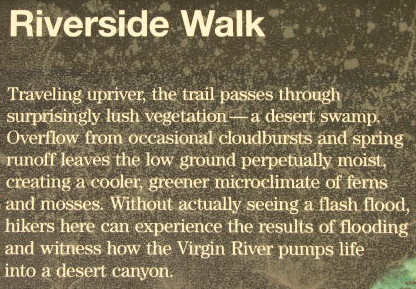
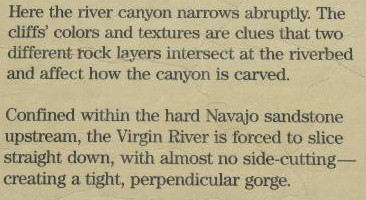
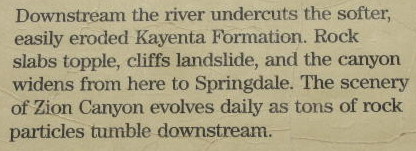
This was a popular location for people to 'play' at the
river.
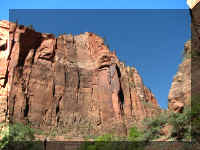
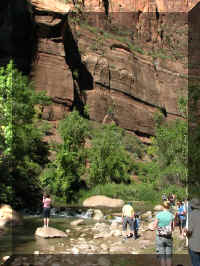
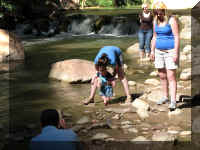
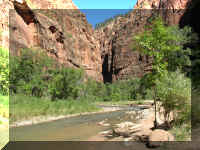
There were several locations where you could get close to the river.
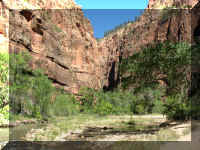
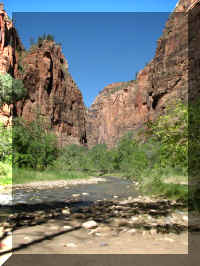
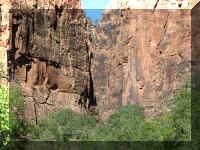

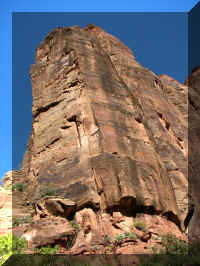
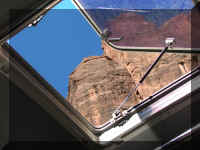
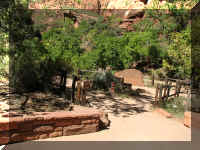
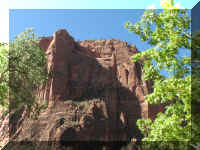

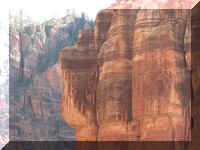
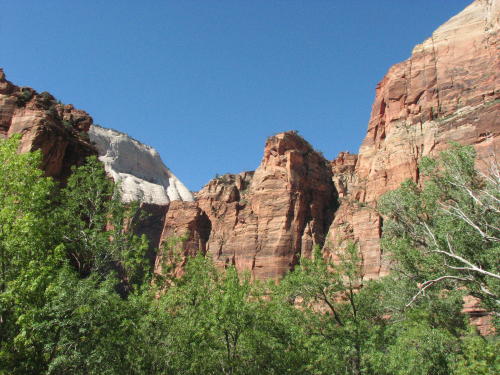
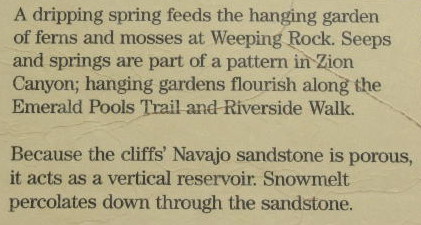

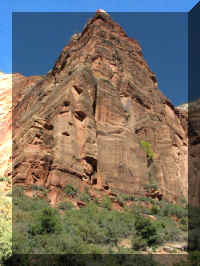
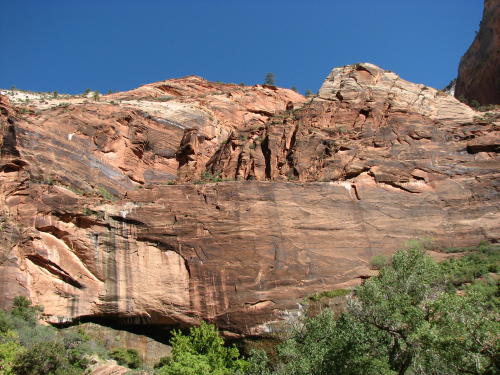
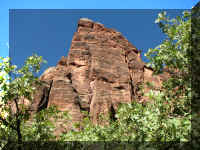
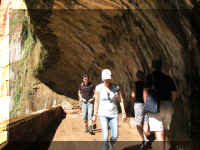
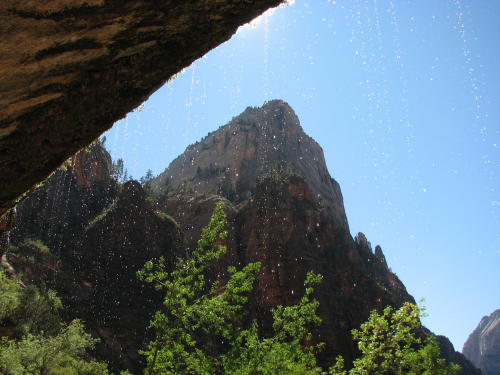
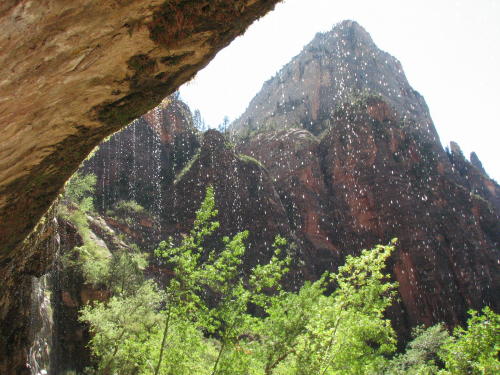
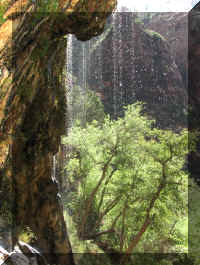
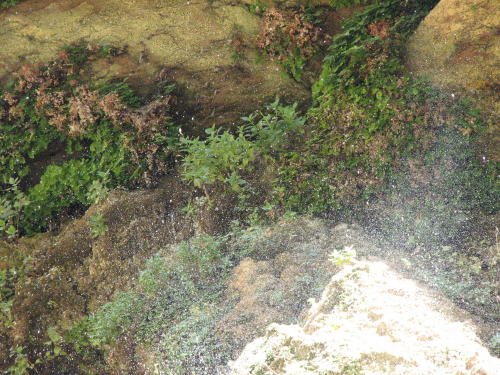
These droplets are coming from UNDER the ledge,
through the rock, not over the edge.
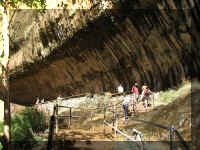
The water flow at this LITTLE waterfall is very small at this time of year.
But, the message is important. The path to the shuttle had some interesting
flowers and mushrooms growing on the rock.
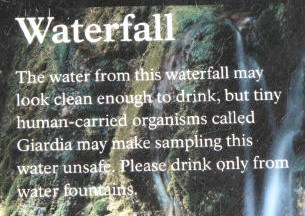
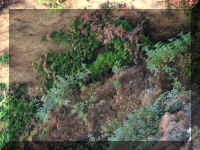
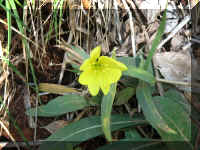
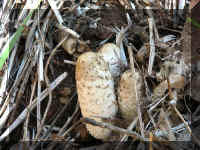
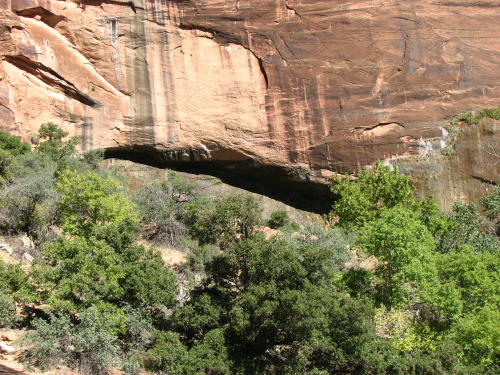
The drivers pointed out the Sentinel Slide area and shared some stories of
the event.
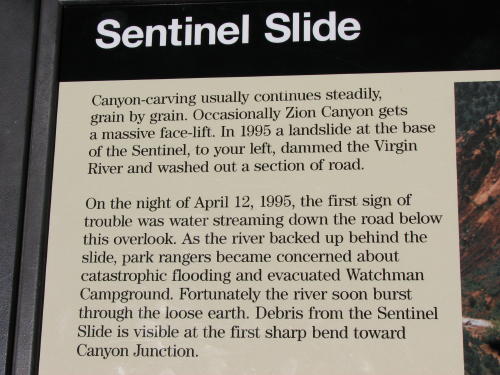
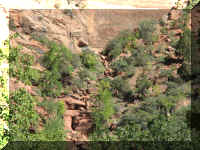
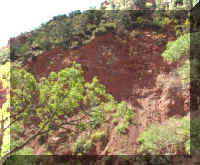
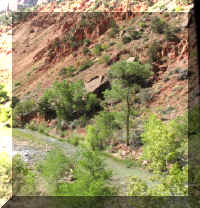
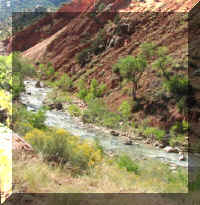
The views were beautiful even from the shuttle.
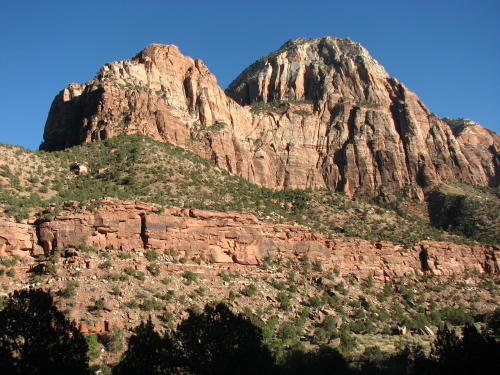
The moon appears . . .
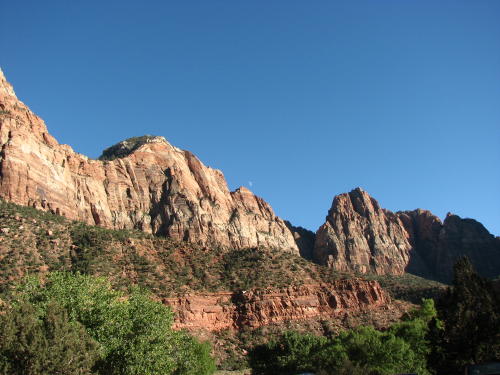
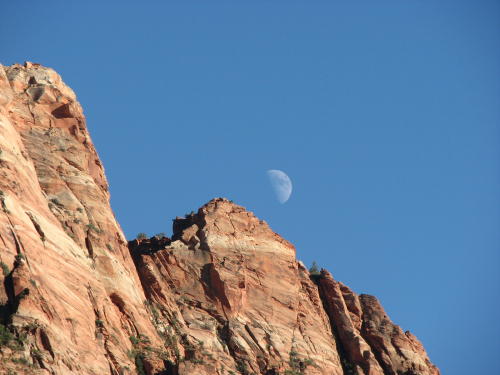
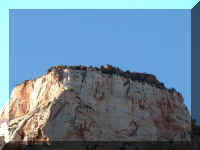
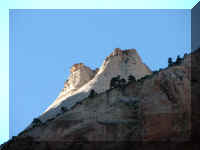
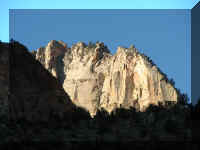
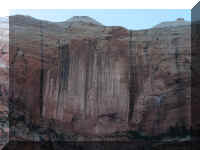
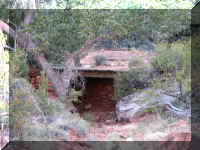
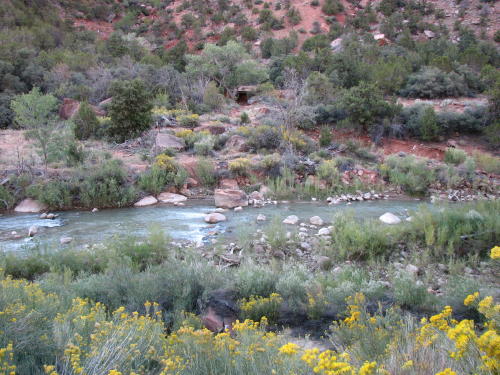
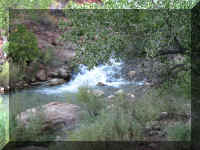
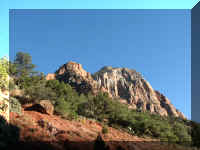
We rode the shuttle again the entire canyon route in the evening to see the changes
approaching night made on
the rocks. It was a wonderful time to be in the canyon - far less people
than in the afternoon. The setting sun made for interesting shadows and some difficulty
making photographs.

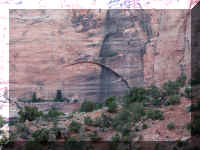
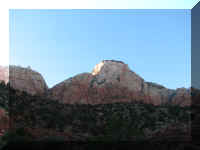
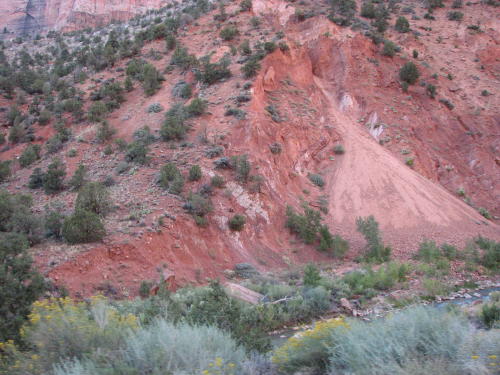
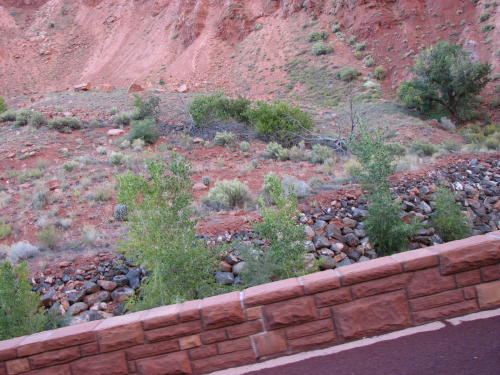

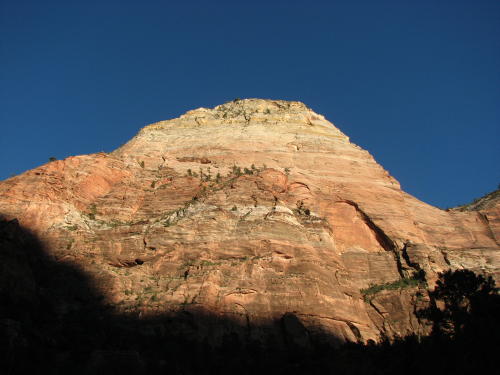
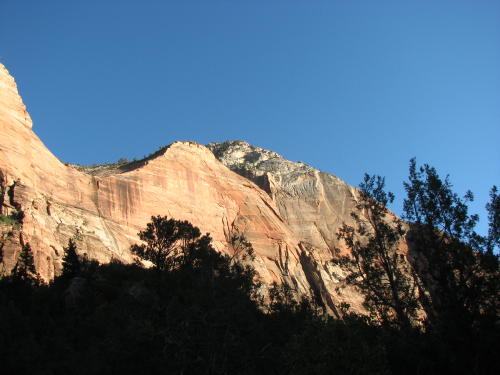


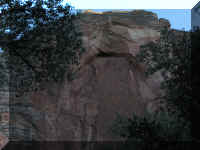
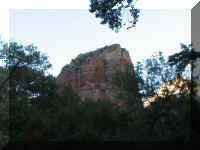
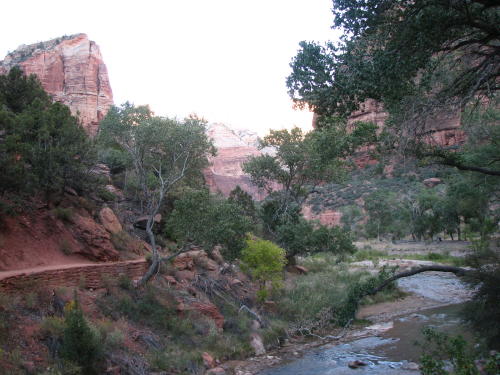
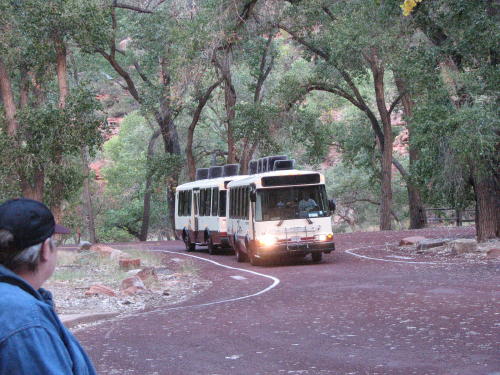
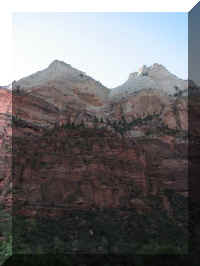
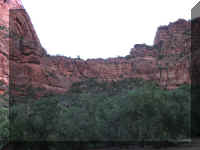

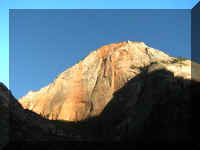
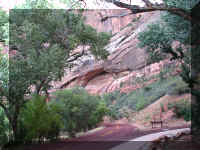
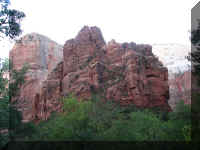

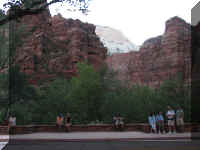
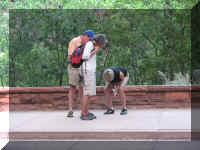 The
people across the road were waiting for a shuttle out of the canyon. We were
riding into the canyon.
The
people across the road were waiting for a shuttle out of the canyon. We were
riding into the canyon.
Something very interesting must have been on the sidewalk.
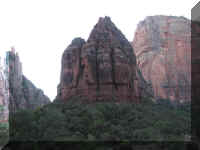
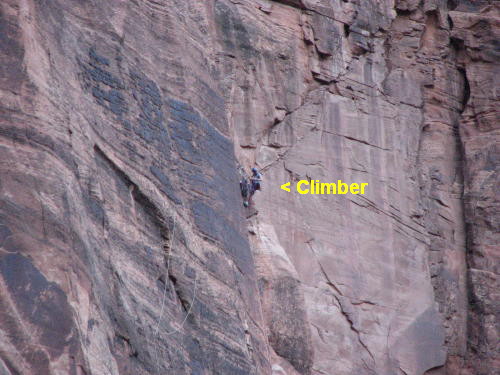
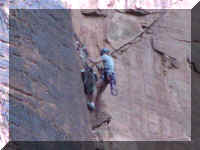

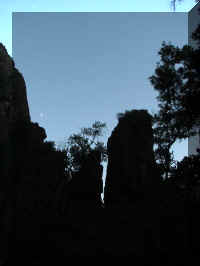
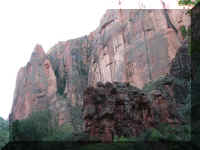
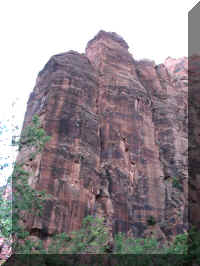
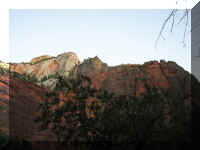
The driver stopped the shuttle to point out this climber he had noticed
earlier. You will note that this climber is not actively climbing. The shuttle
driver told us he was going to hang there all night. Some climbs in the park are
three days long.
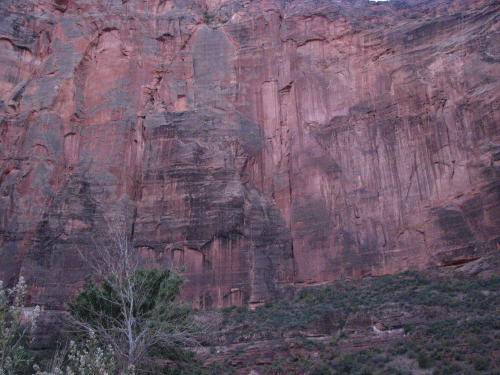
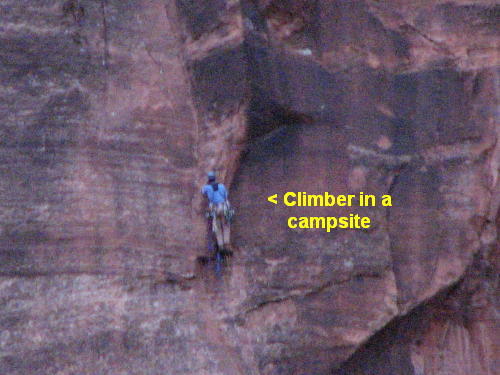
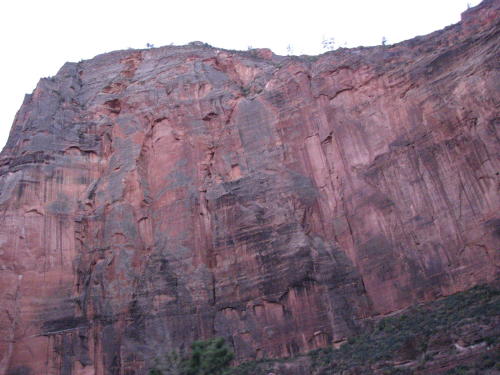
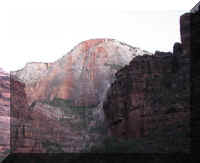
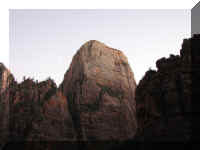
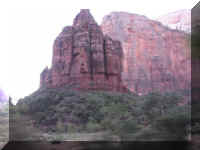
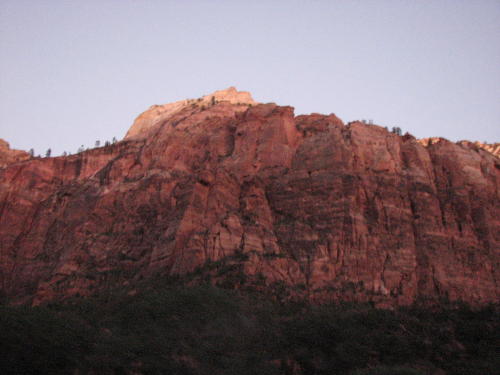
At the prior shuttle stop, Mary Lou told Fred to move to the left side of the
bus. She had overheard the driver telling someone he would stop so he could see
turkeys sitting in the trees. The turkeys are there every night.
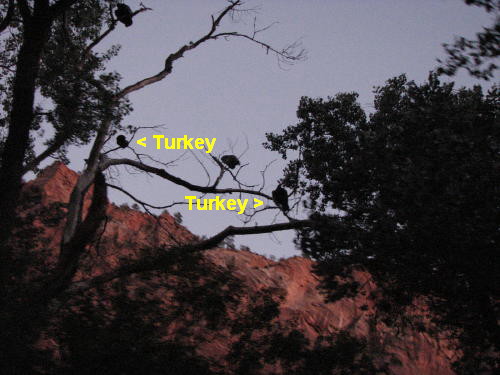
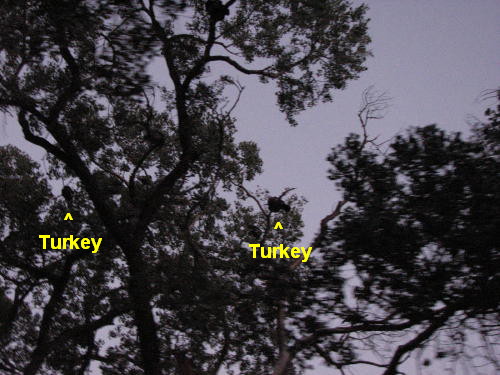
The moon again . . .
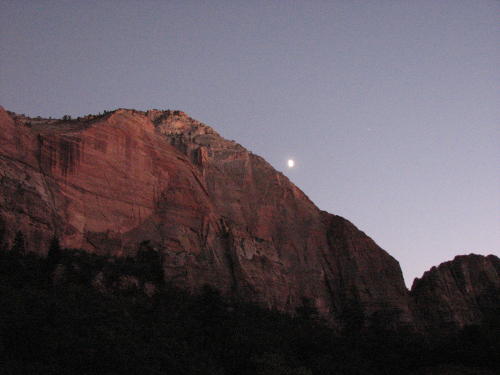
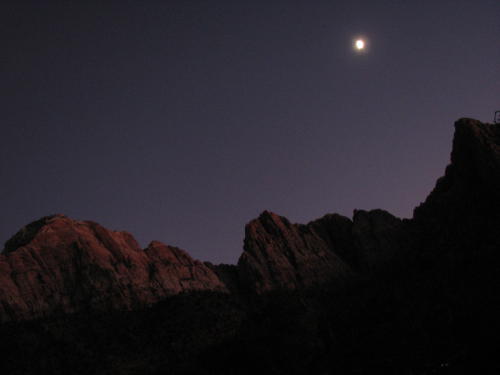
Our second day at
Zion . . .
We took a day to drive the Zion Mount Carmel Highway out the east side of the park - on
the same road we would use the next day leaving Zion. However, Mary Lou thought
our first drive in the area with frequent stops for photographs would be more
enjoyable without the HHII in tow. It did not cost anything to drive through the tunnel with
only the truck.
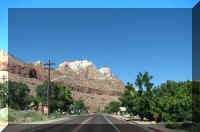
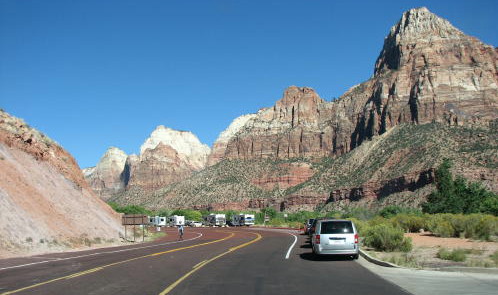
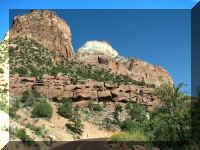
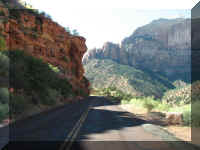
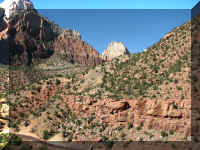
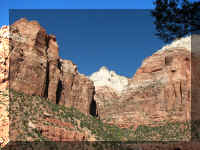
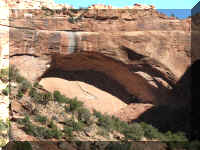
The road climbs the talus slope of Pine Creek Canyon in six switchbacks,
entering the 5,707 foot Zion-Mt Carmel Tunnel built in 1930.
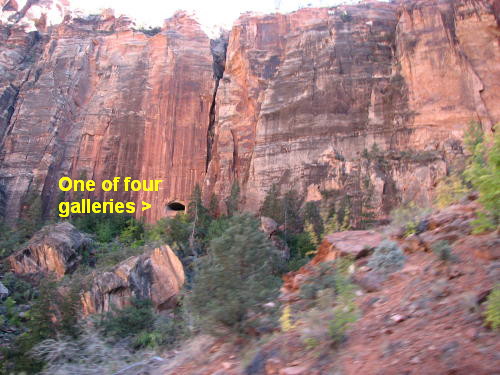
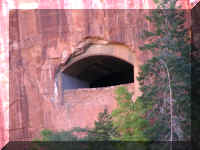
Today the galleries let light and
air into the tunnel.
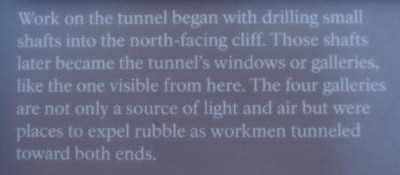
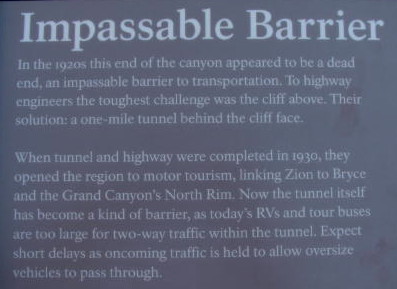
A couple construction photographs.
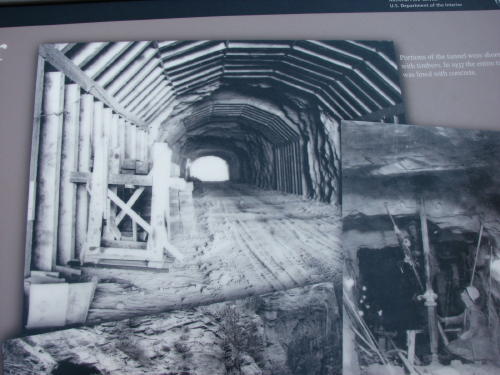
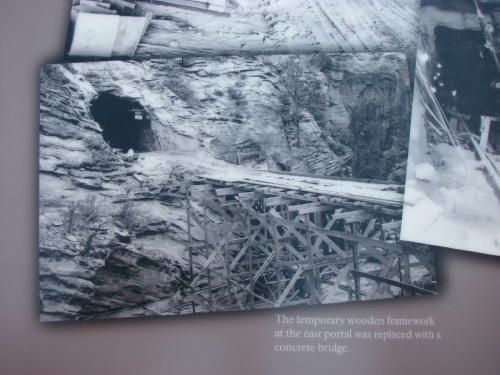
Close to the tunnel we spotted a climber.
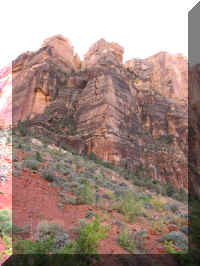
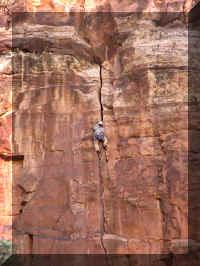
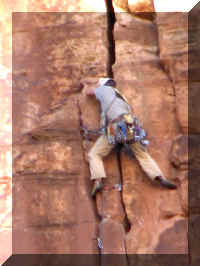
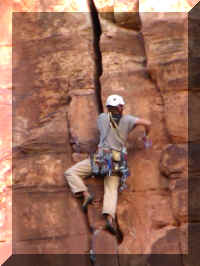
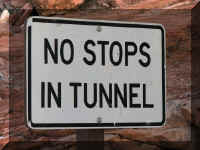
 In
order to permit tall and long vehicles to go through the Zion Mt. Carmel Tunnel, a $15 fee
is charged for an 'escort'. The fee is paid as you enter the park if you are going
to use the tunnel to leave the park. It is not really an 'escort' - the opposing traffic
is stopped from entering the tunnel so tall and long vehicles can drive down
the middle of the two-lane road in the tunnel. Because there is always a tall or
long vehicle, traffic is always stopped before proceeding single file.
In
order to permit tall and long vehicles to go through the Zion Mt. Carmel Tunnel, a $15 fee
is charged for an 'escort'. The fee is paid as you enter the park if you are going
to use the tunnel to leave the park. It is not really an 'escort' - the opposing traffic
is stopped from entering the tunnel so tall and long vehicles can drive down
the middle of the two-lane road in the tunnel. Because there is always a tall or
long vehicle, traffic is always stopped before proceeding single file.
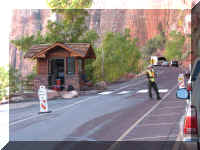
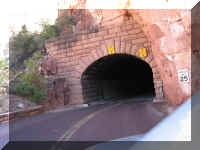
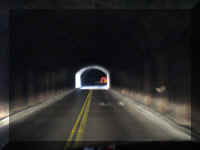
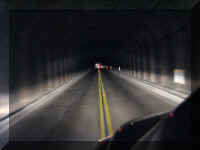
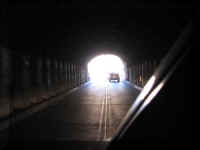
If you time it right, you can make a photograph through the gallery without
stopping your vehicle.
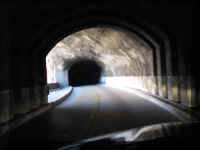
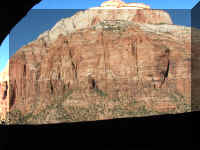
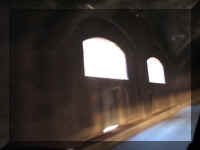
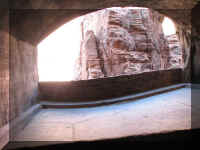
We were told the texture and shape of the rock was very different on the 'other side'
of the tunnel. It was.
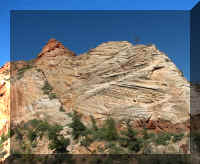
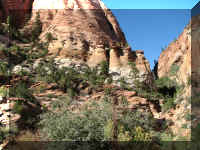
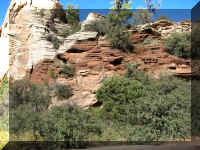
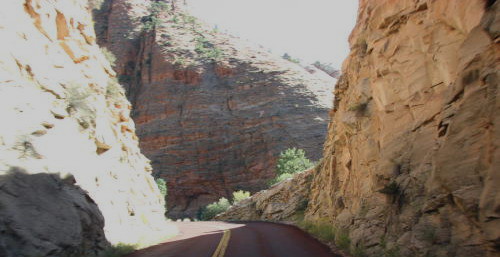
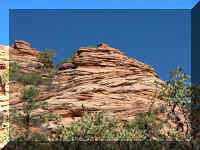
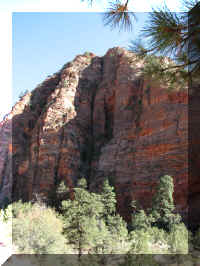
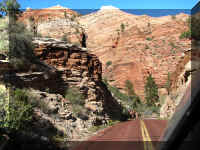
A second tunnel was cut taller so it required no special restrictions.
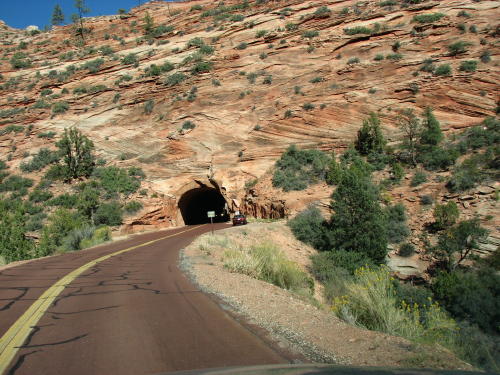
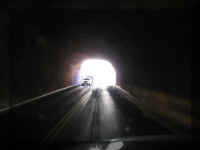
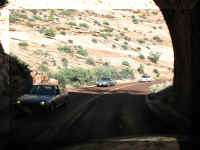
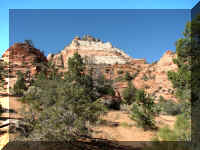
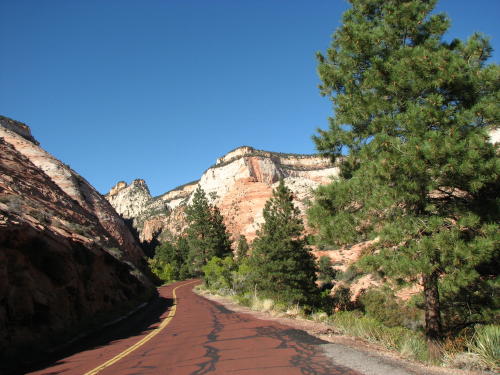
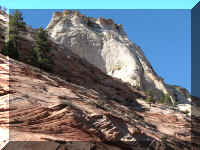
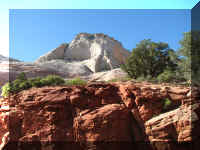
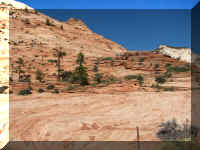
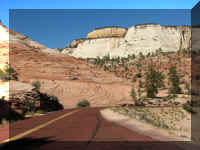
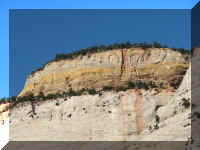
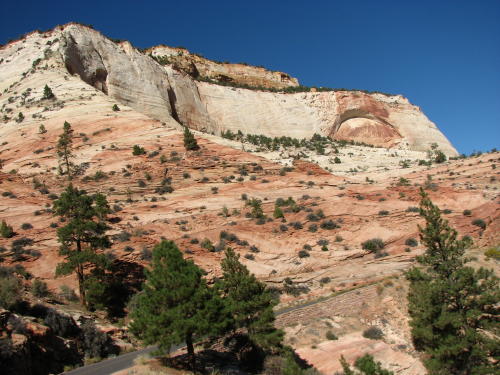
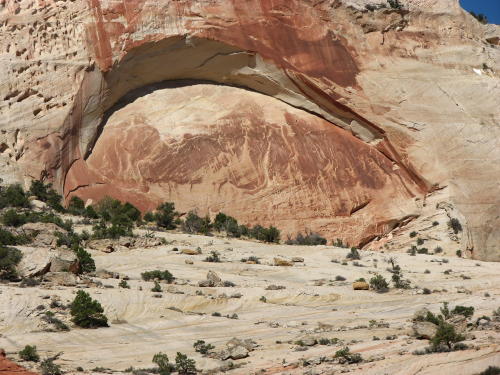
This goat stood almost motionless posing for photographs for several minutes.
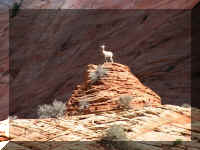
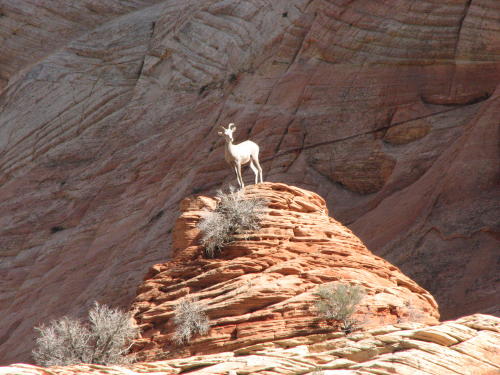
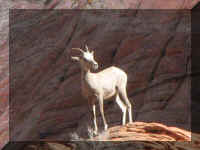

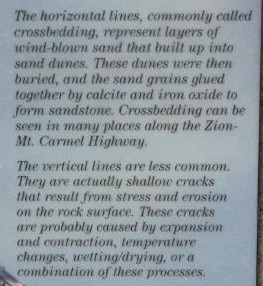
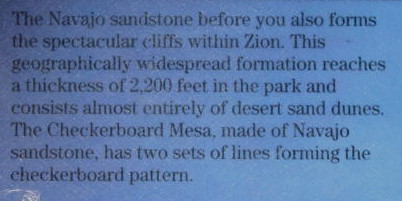
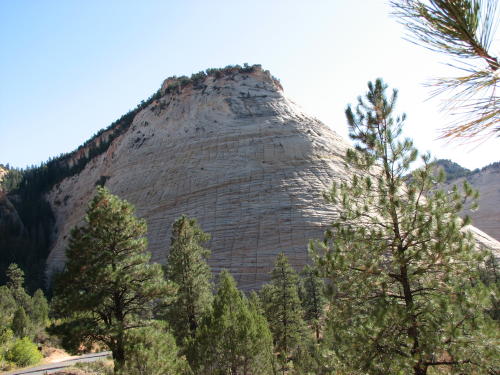
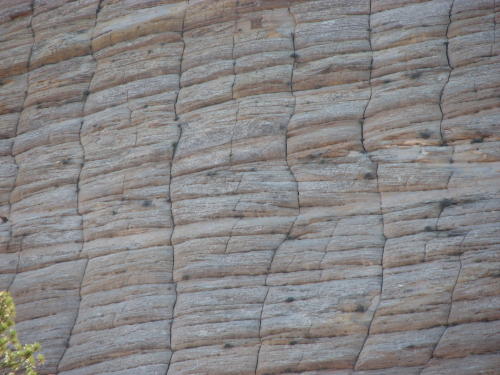
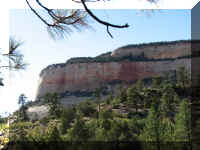
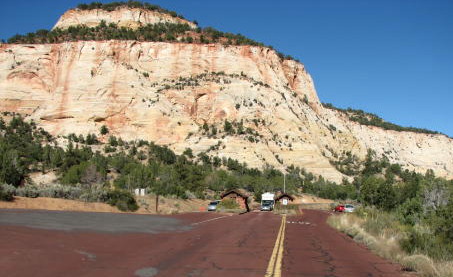
Clinging to life on a rock . . .
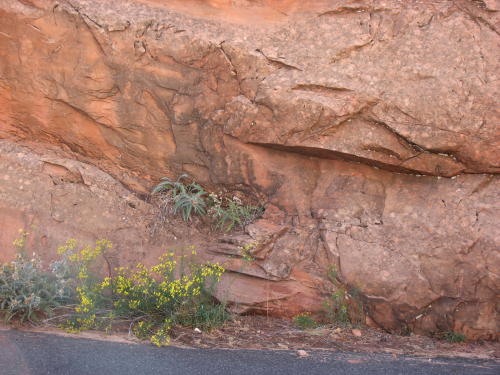
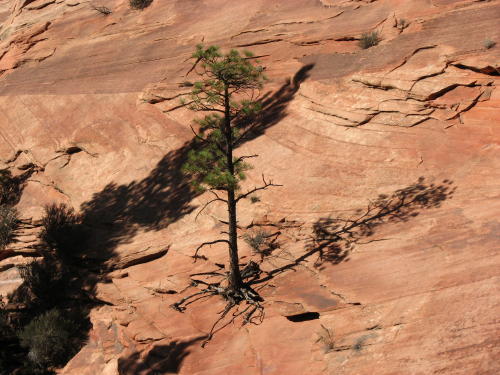
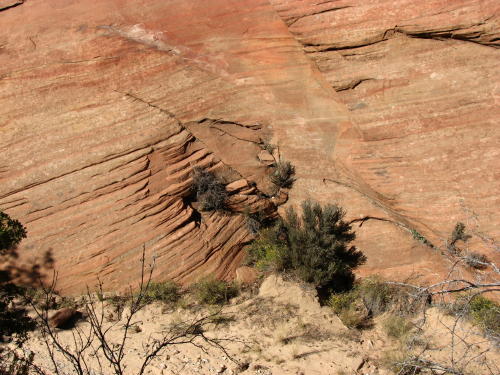
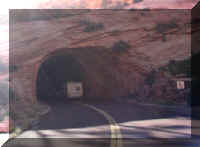
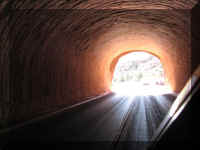
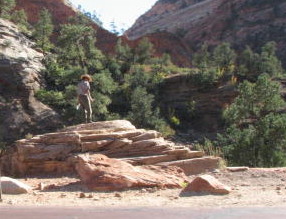
This is a park ranger portraying the part
of a goat by standing on a pile of rock.
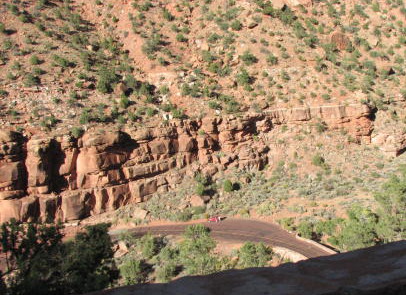
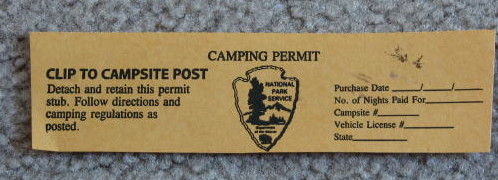 We
had an interesting thing happen in Zion one evening. A woman knocked on our
door. She asked us to put a 'blank' camping permit on our post when we vacated
our site in the morning and one on the post next door if our neighbor was
vacating their site. She instructed us not to put it out until 9:00am - she said
by then the camp host will have removed all expired camping permits.
We
had an interesting thing happen in Zion one evening. A woman knocked on our
door. She asked us to put a 'blank' camping permit on our post when we vacated
our site in the morning and one on the post next door if our neighbor was
vacating their site. She instructed us not to put it out until 9:00am - she said
by then the camp host will have removed all expired camping permits.
By doing this she was trying to 'reserve' sites before she and her friends
arrived the next day. By the way, ours was a 'first come' campground - no
reservations
We tell you this so when you arrive at a 'first come' campground you verify
that the camping permit is properly filled out. If not, the site is available
for your use.
Leaving Zion
National Park . . .
The next morning we had the HHII in tow through the tunnel because we were
leaving Zion. This time, we straddled the center line to keep the edges of the HHII intact.
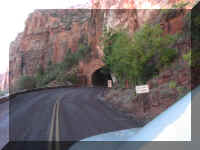
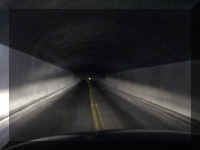
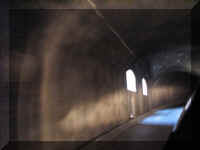
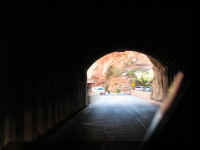
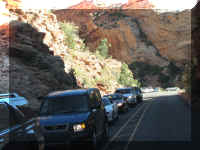 < The line on the other
side
The second tunnel >.
< The line on the other
side
The second tunnel >. 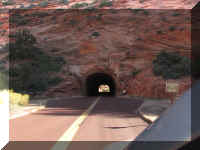
We had a great time at Zion. If the weather was not going to change, we may
have extended our stay at Zion but we had other places to see.
The Shuttle Buses . . .
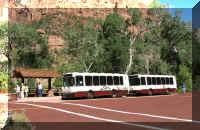 Before we close this page, here is some information
about the shuttles.
Before we close this page, here is some information
about the shuttles.
The 'trailer' was attached to the 'bus' with an articulating
connection.
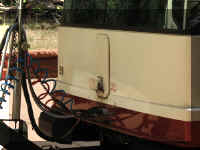
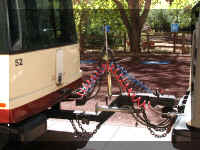
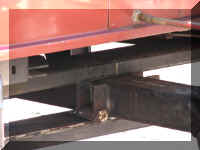
When the 'bus' turns, the front and rear wheels on the trailer
turn as well.
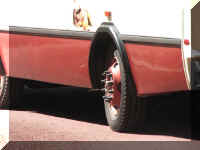
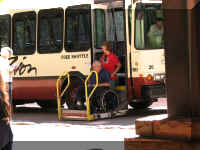
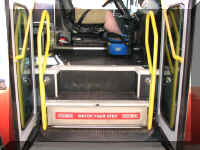 Each
shuttle had a built-in handicap lift. The lift slid into the riser of a step at
the front door and under the floor.
Each
shuttle had a built-in handicap lift. The lift slid into the riser of a step at
the front door and under the floor.
The narration was recorded and played on an i-Pod or other electronic device.
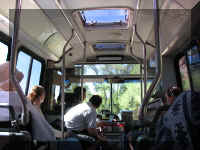
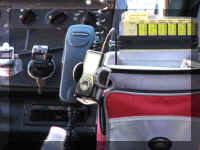
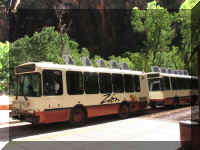 The
shuttles did not have air conditioning. The roof vents on the shuttle opened
from the front edge and acted as scoops, pulling in air.
The
shuttles did not have air conditioning. The roof vents on the shuttle opened
from the front edge and acted as scoops, pulling in air.
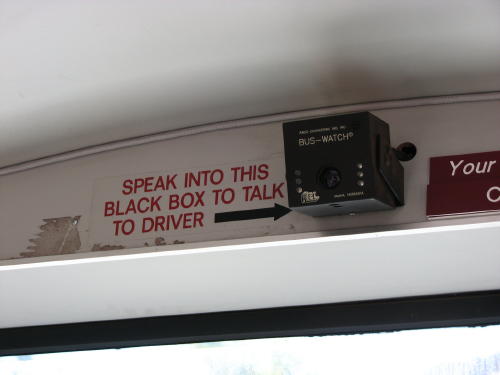 The
people in the trailer could contact the driver.
The
people in the trailer could contact the driver.
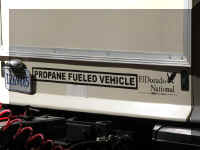
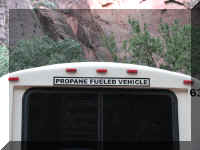 The
shuttles were fueled by propane. They were said to replace 16 private vehicles
and emit less pollution that one passenger car.
The
shuttles were fueled by propane. They were said to replace 16 private vehicles
and emit less pollution that one passenger car.
The shuttles are scheduled to run about every seven minutes at each stop
during peak times. These signs were post at each stop.
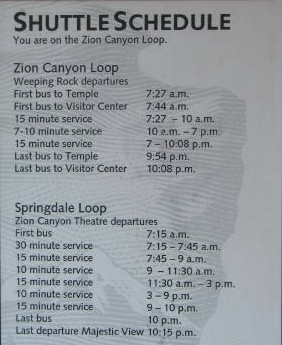
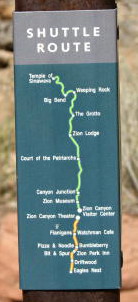
Our experience with the shuttle system was very good. We were at Zion in early
October. The majority of visitors arrive in the Spring and Fall. The park and
its main roads are open all year. From Easter weekend through October, the Zion
Canyon Scenic Drive is only accessible by park shuttle bus.
An admission fee of $25 per private vehicle allows entrance to the park for
seven calendar days. Special passes are available. Fred, as a holder of a Golden Age Pass,
got us in free but we had to pay the $15 for the "escort" through the
tunnel.
Heading for Bryce Canyon National Park . . .
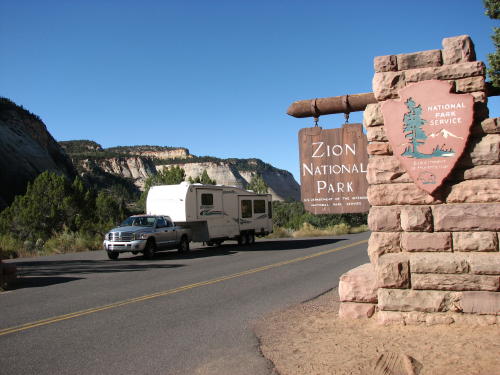
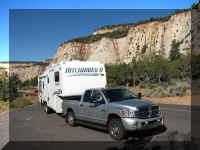
GO
BACK TO > > > Pacific Northwest - 2008
Top of Page

 Established
in 1909 as Mukuntuweap National Monument, it became Zion National Park in
1919. Covering 229 square miles, it is Utah's oldest National Park. The
name "Zion" meaning "place of refuge" was given to the
canyon by Mormon Pioneers. Unlike some other national parks where you are at the
canyon rim looking down - in Zion, you are on the floor of the canyon looking
up.
Established
in 1909 as Mukuntuweap National Monument, it became Zion National Park in
1919. Covering 229 square miles, it is Utah's oldest National Park. The
name "Zion" meaning "place of refuge" was given to the
canyon by Mormon Pioneers. Unlike some other national parks where you are at the
canyon rim looking down - in Zion, you are on the floor of the canyon looking
up.

























































































































































































 We
had an interesting thing happen in Zion one evening. A woman knocked on our
door. She asked us to put a 'blank' camping permit on our post when we vacated
our site in the morning and one on the post next door if our neighbor was
vacating their site. She instructed us not to put it out until 9:00am - she said
by then the camp host will have removed all expired camping permits.
We
had an interesting thing happen in Zion one evening. A woman knocked on our
door. She asked us to put a 'blank' camping permit on our post when we vacated
our site in the morning and one on the post next door if our neighbor was
vacating their site. She instructed us not to put it out until 9:00am - she said
by then the camp host will have removed all expired camping permits. 















 The
people in the trailer could contact the driver.
The
people in the trailer could contact the driver.




